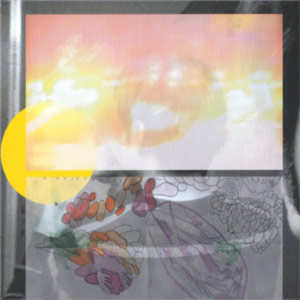
Life Control
Kill Shaman
There are very few things known about Night Control. The fact that Chris Curtis Smith, the shadowy figure behind last year’s virtually unheard, future cult classic Death Control album, has yet to give an interview or reveal his face, makes his project all the better. Night Control should not be tied to a time or place, or for that matter even a genre—that would only ruin the mystery. All that can be gathered is that Smith is a prolific alchemist, evidenced by Life Control, his second record arriving before the last could even be fully ingested or understood. In context, we can only assume that Life Control is the thriving opposite to its predecessor, that or a companion piece meant to be listened to in tandem. After giving this one a few too many spins in the last few days, the verdict is still out as to what Smith is trying to tell us exactly.
Like Death Control, Life Control is not exactly built, as there are no concrete structures in place. It’s more of an amorphous, nomadic spirit, constantly fragmenting and rambling without direction. At first glance, it could even appear as the work of an overzealous tape loop novice, splicing together demos and basement experiments into a chaotic mess of noise and tossed-off loner laments. Laborious concentration is required to sift through the endless, even sometimes brackish, layers of cacophony before arriving at a preserved amber core of homespun psychedelia and brief, but shining, pop moments. Digging for the diamonds is usually a trait I can’t fully recommend unless it’s entirely worth it. On Life Control, the reward that comes from this patience, though, is a thing of abject beauty.
Within Life Control’s whirlwind span there’s something for everyone. It’s like flying through the narrow passage of a time-space continuum where the remnants of Eno’s rock phase, Guided By Voices’ bootlegs, ultra-obscuro Nuggets compilations, and the most primitive roots of industrial and hip-hop coalesce in perfectly random encounters. “Sculpt” and its counterpoint, “Break Sculpt,” are examples of Smith’s assemblages that go beyond influence and comparison. They’re also the two moments on Life Control that are the most polarizing, taking the Night Control maximalism to a freeform extreme and almost letting the machines take over. Imagine a dream-inspired collage of Olivia Tremor Control turning into a nightmare apocalypse inhabited by cyborgs and you’re getting close. Those robotic leanings, though, seem natural for Smith, a place in the near future where those lost blues and organic rock epiphanies are discovered under scrap metal and nuclear waste. “West Side Birds” is the Soft Machine spliced from the black box of jetliner wreckage. “The Word” could be a bionic version of the Velvets, “Master Hiss” comprised of space dust brought to Earth by increasing gravity, and “Fore,” Smith’s most vulnerable piano-led ballad, a distant memory from the past brought to life in hologram. Should we theorize that Night Control is tapping a oracle predicting the paths of psychedelic pioneers, then we have to believe breaking down psychedelia to its base elements and rearranging them like a sutured imperfect puzzle is how the underground is bound to operate. As much as Life Control is an enriching sonic experience, when it is deduced to its purest particles and molecules, it’s also one of this young decade’s most cryptically enriching records.
Kevin J. Elliott
PRIMITIVE FUTURES
Introducing... Sweatheart
Carl Simmons, Honeysuckle Tendrals
Mattress, Low Blows
Columbus Discount Records' Year-End Blitz
Introducing... Laminated Cat
New albums by Sonny and the Sunsets and Home Blitz
The Electric Bunnies, Through the Magical Door
Captured Tracks' Latest Singles Batch
Hozac's Autumnal Motherload
Dull Knife Songwriter Singles Series
Psychedelic Horseshit, Too Many Hits
Factums and Moon Duo
Introducing... The Mantles
Gas, Compressed Gas EP
